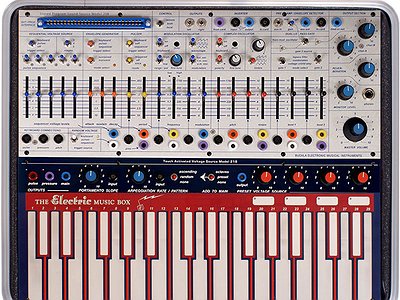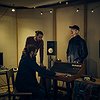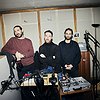Name: Arthur Hnatek Trio
Members: Arthur Hnatek, Fabien Iannone (bass), Francesco Geminiani (sax)
Interviewee: Arthur Hnatek
Nationality: Swiss
Occupation: Drummer, multi-instrumentalist, composer, improviser
Recent release: The Arthur Hnatek Trio's Apnea EP is out September 15th 2023 via Bridge the Gap.
Tool of Creation: Buchla Music Easel
Type of Tool: Analog synthesizer
Designed by: Buchla Electronic Musical Instruments (BEMI)
Years produced: 1973-
Country of origin: USA
If you enjoyed this interview with Arthur Hnatek about the Buchla Music Easel and would like to stay up to date with his and his trio's music, visit his official homepage. He is also on Instagram, Facebook, and twitter. Arthur is also currently part of Erik Truffaz's band - go here for our Erik Truffaz interview.
To read more about the Buchla Music Easel, we recommend our Kaitlyn Aurelia Smith interview in which she shares her perspective on the instrument.
What was your first encounter with the Buchla Music Easel?
I think the first musician I admire and discovered he was using Buchla instruments is probably Floating Points. The way he uses those incredibly sophisticated modules in the context of club and electronica settings was/is very exciting to me.
Later on, our saxophonist Francesco Geminiani purchased the Easel and started using it in our shows and since then we're all completely in awe with the philosophy and sound it has.
Just like any other piece of equipment, the Buchla Music Easel has a rich history. Are you interested in it? And if so, what are some of the key points from this history for you personally?
Of course! Spent quite a lot of time learning about it.
Before I knew anything about the instruments (and Buchla more generally), I was always enjoying the music of Suzanne Ciani. We're all fans until this day! But of course also learning about Charles Cohen's use of the Easel in a completely different way.
[Read our Suzanne Ciani interview]
In a more historical way, the divide between the East and the West Coast synthesis philosophies is fascinating to me, specially in the context of innovation and redefining how we interface with electronic instruments.
Of course, I'm also always down for a fun story like the accidental LSD high a repair person had to deal with after touching an old Buchla system :)
What, to you, are some of the most interesting recordings made with the Buchla Music Easel?
It's hard to say exactly. Specially if we talk only about the Easel, a good resource are the live improvisations by Charles Cohen.
What interests you about the Buchla Music Easel in terms of it contributing to your creative ideals?
In the context of AH3 (Arthur Hnatek Trio), I think we were drawn to the rather acoustic / organic percussive sounds it can generate and how inspiring the sequencer is.
What are some of the stand-out features from your point of view?
The Easel can generate random voltages (like many synths) but for some reason I dont fully know, the Easel's “randomness” feels very musical, almost like there are structures within chaos ... fascinating !
Prior to using it for the first time, how did you acquaint yourself with the Buchla Music Easel? Will you usually consult a manual before starting to work with a new device – and what was that like for the Buchla Music Easel?
As a general rule, I love reading manuals. I'm that kind of person. I even read manuals of stuff I never had in front of me.
But in the context of the Buchla, most of it was taught, showed and explained by Francesco who went really deep (it's really his instrument at the end of the day).
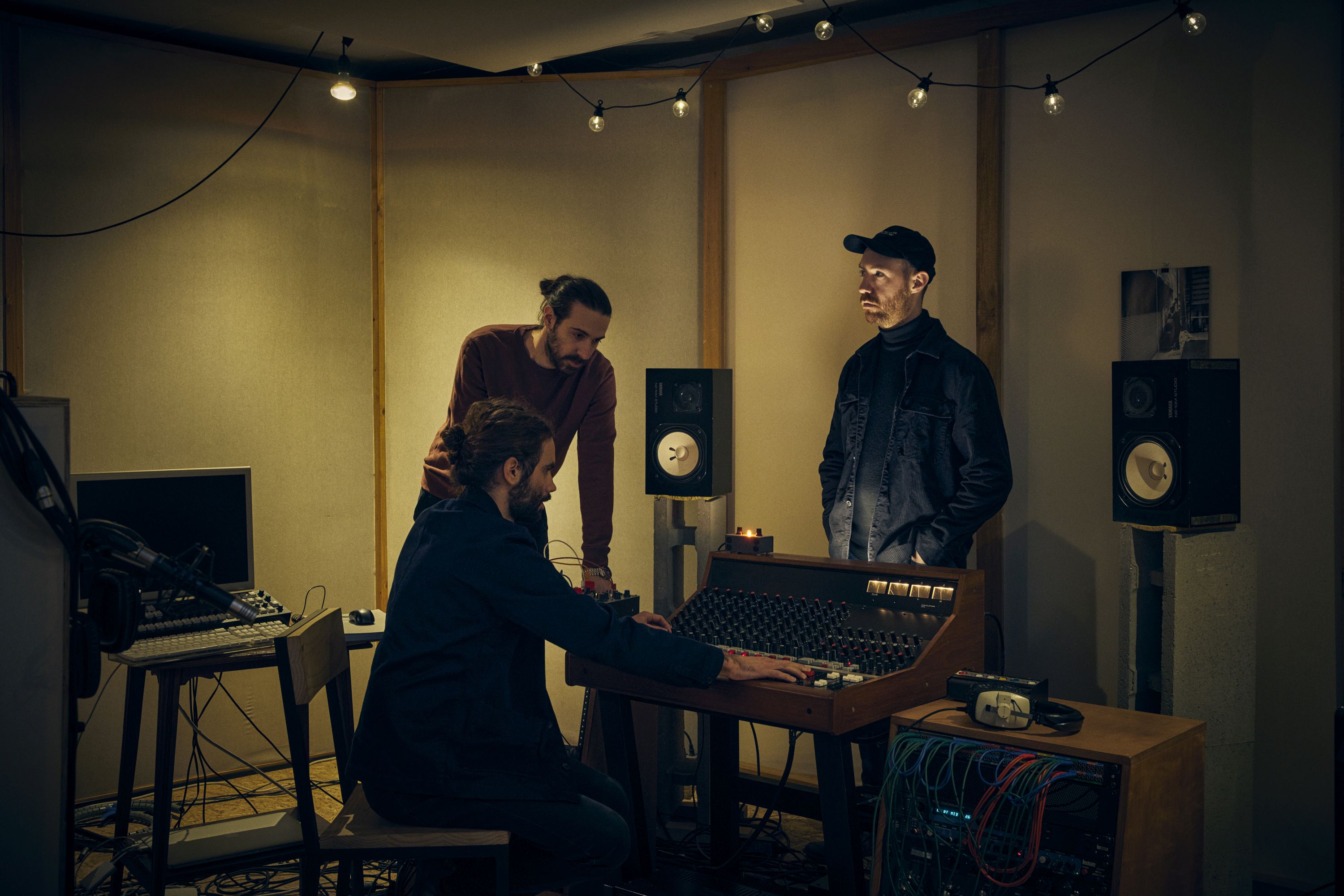
Arthur Hnatek Trio Interview Image (c) the artists
Tell me a bit about the interface of the Buchla Music Easel – what does playing it feel like, what do you enjoy about it, compared to some of your other instruments?
I guess the instrument is so cleverly built and designed that it lets lot of intuition work in musical ways.
The interface feels very different that anything else though. It's a whole other vocabulary. It's begging for irregular odd-time meters and evolving structures, which we love in the band.
It's also so clear this instrument was meant to be played live and has such an expressive response to it.
How would you describe the sonic potential of the Buchla Music Easel?
Endless
In which way does the Buchla Music Easel influence musical results and what kind of compositions does it encourage / foster?
In the context of our EP Apnea, we wanted to start each piece with the Easel. Let it be the structural inspiration. At times, it was used as a compositional tool, at others as a reference sound palette.
As a drummer, I was interested in mimicking some of the percussive characteristics we love about it.
More generally, how do you see the relationship between your instruments and the music you make?
Hard to say. I'm a firm believer that you can do anything with anything. It's more about finding interfaces that connect with your workflow.
Of course, some instruments tend to really thrive in a specific context but usually the best ones let you stir towards any musical vision.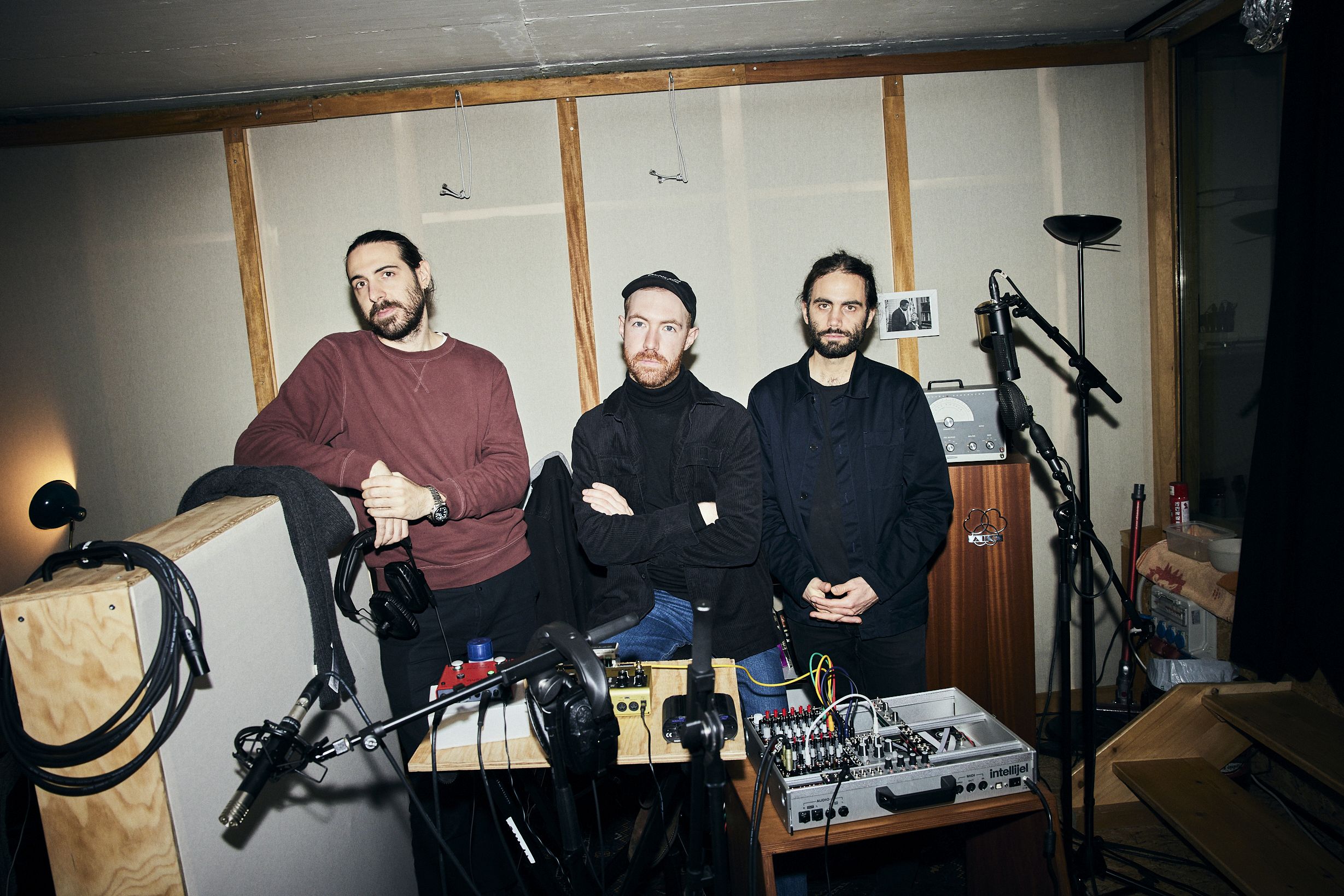
Arthur Hnatek Trio Interview Image (c) the artists
Some see instruments and equipment as far less important than actual creativity, others feel they go hand in hand. What's your take on that?
I would say I fall in the second group. In my experience, a musical instrument and/or piece of equipment has many times sparked a new composition or an idea that led to radical new sounds.
It's easy to get lost in that zone but personally it has always worked out.
Could you describe working with the Buchla Music Easel on the basis of a piece, live performance or album that's particularly dear to you, please?
A good example is the track “Pulser”. That piece was almost entirely composed by the Easel.
I mean “composed” in the sense that Francesco patched it in a way to let it spit out fairly random but very groovy ostinatos. We recorded those improvisations and chose the best parts in order to then transcribe and learn what the machine had created for us.
At the stage we weren't thinking about making a new piece. It was just out of curiosity to learn the very challenging rhythms it could generate for us. It was such a fun process.
How does the Buchla Music Easel interact / complement / conflict with some of the other tools in your studio?
Personally, I don't own an Easel. So it doest conflict at all.
I'm pretty obsessed with the Arturia plugin version though.
Are there other artists working with the Buchla Music Easel whose work you find inspiring? What do you appreciate about their take on it?
Many I'm sure ! But as electronic musicians tend to be sometimes secretive about the tools they use, I wouldn't know to which extend the Easel is part of that music we love. I wouldn't be surprised if it's the case.
As much as the Easel is an amazing instrument, it's still considered as a rather esoteric, rare and expensive instrument. What is for sure is I can hear a certain “Buchla” quality in many music and musicians I admire these days.
In the light of picking your tools, how would you describe your views on topics like originality and innovation versus perfection and timelessness in music? Are you interested in a “music of the future” or “continuing a tradition”?
I guess I was always drawn to “technology” from all eras. From the interest in all facets of the dawn of recording sound to new and innovative technologies used by musicians, I want to know it all.
So even though I've spent quite a lot of time learning about the tradition (and specially the craft of playing the drums), I guess I was always fascinated even more by contemporary trends.



